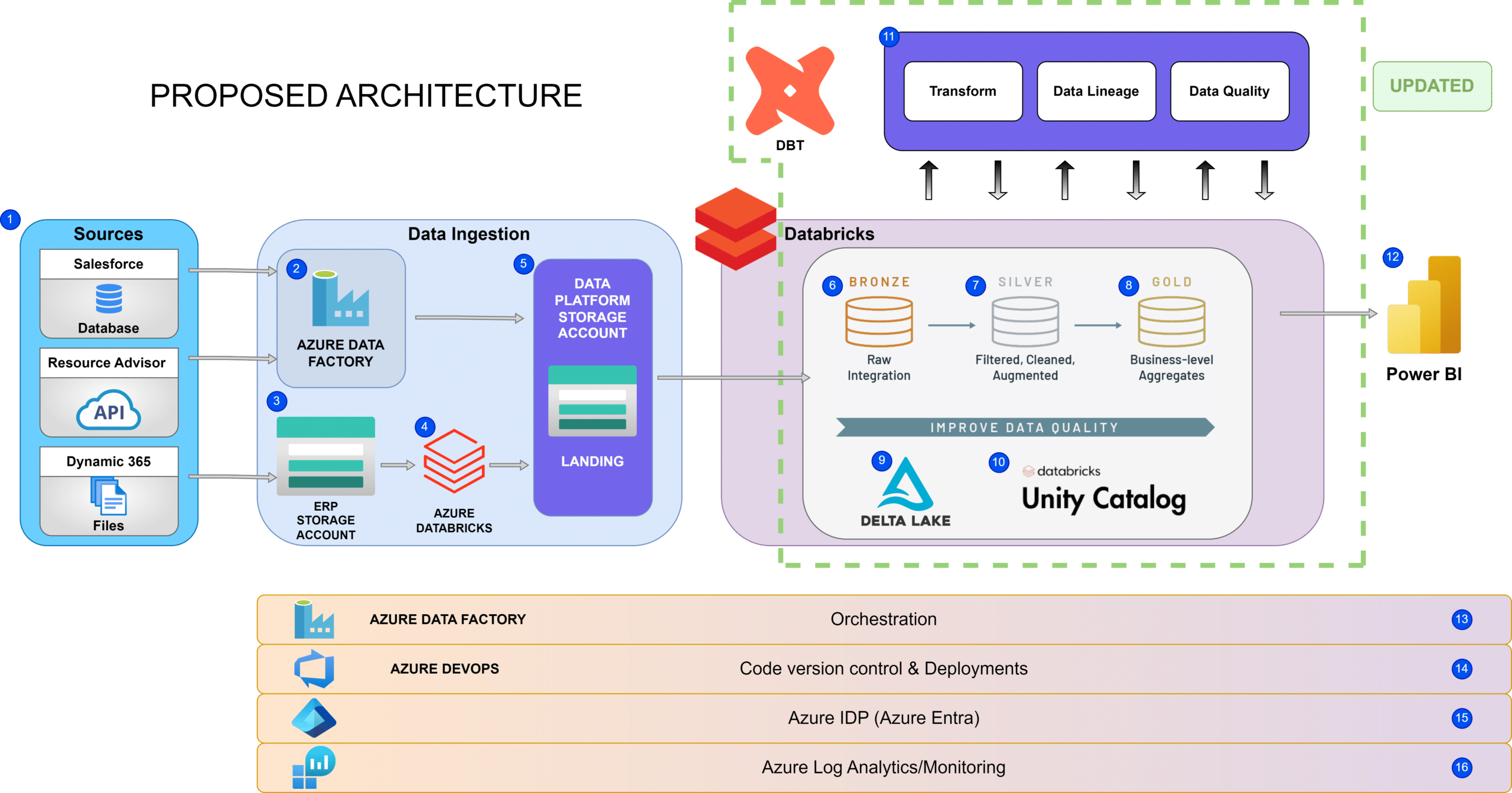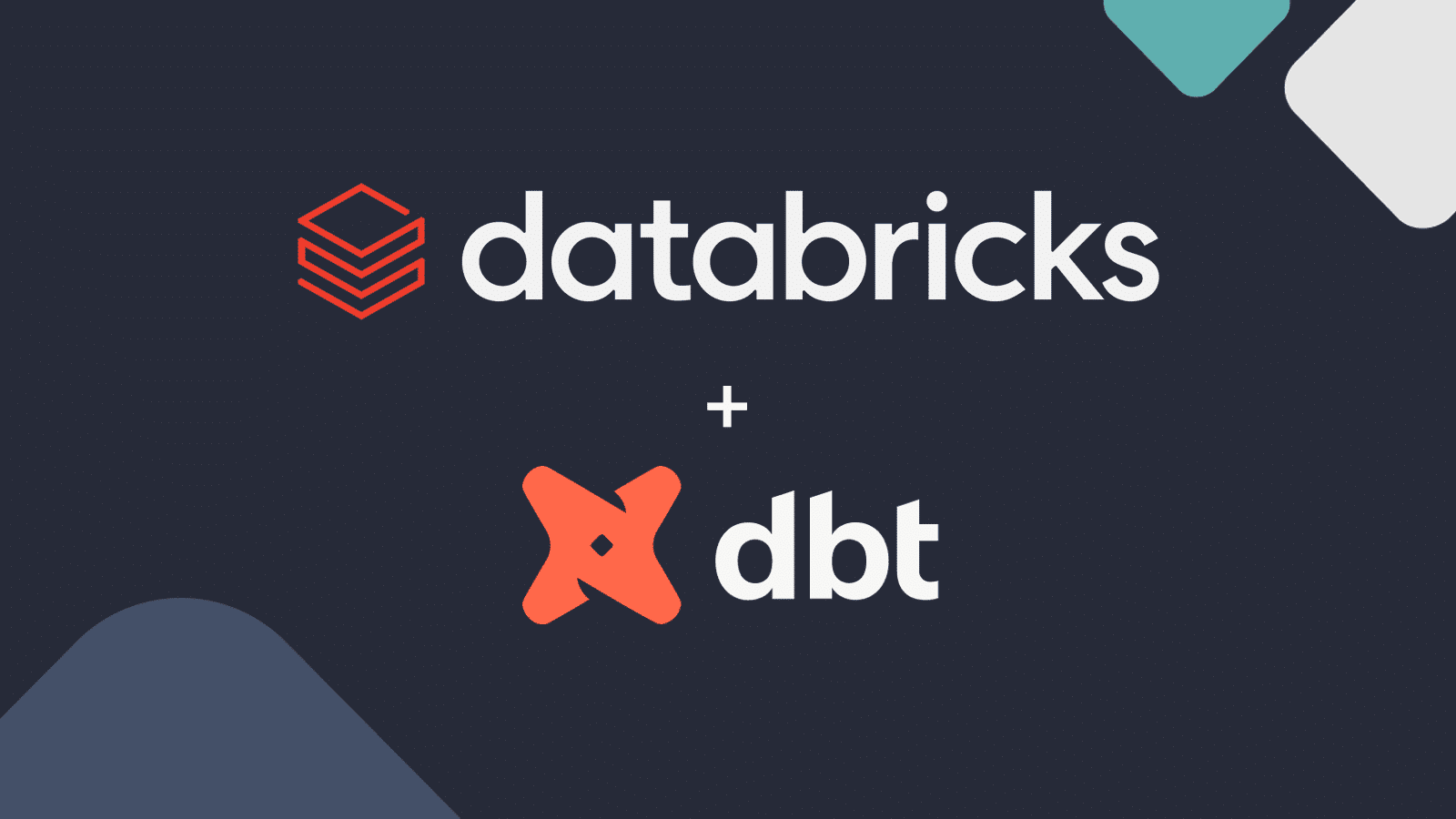Objective
The project aimed to optimise the data platform for our client, a leading retirement living and community services provider for elderly Australians. By leveraging Databricks, we were able to eliminate redundant layers, integrate industry best practices, and significantly improve efficiency in coding, deployment, and value delivery processes. Databricks played a pivotal role in streamlining our optimisation efforts, providing a robust platform for data processing, analysis, and deployment, ultimately enabling us to achieve our optimisation goals efficiently and effectively.

Challenges
- In our journey to enhance client’s data platform, we faced significant challenges stemming from operational inefficiencies and scalability limitations within the existing architecture.
- These complexities prompted us to embark on a thorough redesign and optimisation strategy to address the issues at hand effectively.

Business Challenges
- Hard to identify data lineage.
- No comparison of source data with current data for SCD2 implementation.
- Enhancements take longer due to the non-standard and complex data layers
- Same business transformations are applied in multiple places causing operational inefficiencies.
- Row level security & column level security missing present significant vulnerabilities in data access control.
- Surrogate keys are not reflected across all tables, making the alignment of data inconsistent and leading to inaccuracies in reporting and analysis.

Strategic Approach
- Simplification of the existing architecture by removing unnecessary components.
- Adoption of industry-standard practices to ensure robust performance and reliability.
- Enhancement of coding and deployment workflows for faster turnaround and value realisation.
- Focus on scalable solutions to minimise future operational complexities and support growth.

Results
The project successfully revamped the data architecture, leading to enhanced operational efficiency, reduced complexity, and a solid foundation for scalable growth. This initiative has positioned the organisation for future expansion with a more agile and efficient data platform. Overall result achieved within 4 months of initiation of the project.

Business Value Drivers for the Project
Main Benefits and Value Delivered
Efficiency Improvement
Streamlined processes resulting
in faster development and
deployment cycles.
Scalability and Growth
Established a scalable architecture
that accommodates future growth
without incremental complexity.
Best Practices Implementation
Leveraged cutting-edge industry
standards to ensure the platform’s
reliability and performance.
Operational Simplification
Reduced operational complexities,
enabling the team to focus on
innovation and value creation.
Architectural improvement of Databricks
The challenges and issues faced by the organisation’s current MVP data platform have been comprehensively detailed and analysed in the subsequent sections.
Following consultations with Databricks and the organisation’s design and architecture team, and after identifying problems with the current setup, recommendations have been made to streamline and enhance the existing architecture
The goal is structured around several key points.
- Remove superfluous layers to simplify the system.
- Aim for rapid scalability, reducing operational intricacies.
- Adopt industry-standard best practices for improved performance.
- Boost coding and deployment efficiency, ensuring quicker delivery of value.
- Support future expansion with a streamlined approach to managing growth.

Optimised Solution with Databricks

Overall Solution Components
- Integration with DBT
- Implementation of Unity catalogue
- Orchestration using Azure Data Factory (ADF)
- Integration with Power BI for reporting and visualisation
- Integration and implementation with Azure DevOps for CICD
- Integration with multiple source systems i.e. Dynamics 365, Salesforce, ESG, Manual files
Business Outcome
Unified Analytics Platform
Integrating DBT with Databricks creates a unified platform for end-to-end analytics workflows, simplifying the data stack.
Scalability
Both DBT and Databricks scale with business needs, ensuring data processing workflows can handle fluctuations in demand.
Cost-Effective Solutions
Leveraged cutting-edge industry standards to ensure the platform’s reliability and performance.
Optimised Performance
Databricks optimised environment boosts the performance of DBT transformations, resulting in faster data processing and analytics.
Streamlined Data Transformation
DBT simplifies data transformation with SQL statements, leveraging Databricks’ Spark-based processing for efficient execution.
Enhanced Collaboration and Version Control
DBT supports collaborative workflows and version control for SQL queries, enhancing teamwork among data professionals.
Automated Data Pipeline Management
DBT automates pipeline workflows, including testing and deployment, when integrated with Databricks, ensuring reliability and maintainability.


